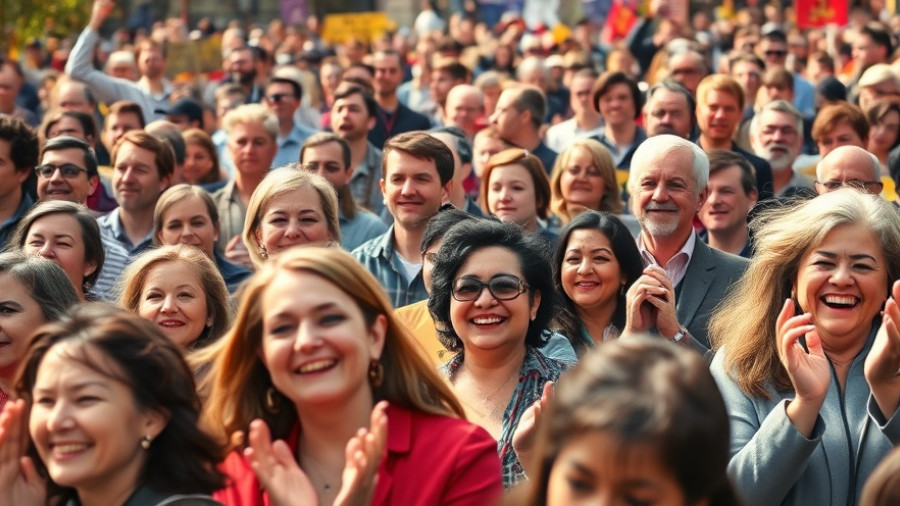
A Call to Protest: Why Every Voice Matters
In today's political landscape, hundreds of Americans gather regularly at protests, passionately calling for justice and change. From the Women’s March to rallies against ICE, the spirit of activism is palpable. Yet, one question often arises: how can small groups of protesters truly influence policy when they seem dwarfed by a substantial governmental machine?
Harvard research shows a remarkable piece of data: when merely 3.5% of a population mobilizes in peaceful protest, their voices become nearly impossible for the government to ignore. In the U.S., this translates to about 12 million people. Protests that mobilize this critical mass not only capture media attention but can also render tangible shifts in public policy, as seen during large-scale movements in history.
Empathy and Community: The Heart of Protest
The recent gatherings—big or small—have underscored a vital truth; change shines brightest when community members unite in empathy, raising banners that express not just individual concerns, but shared hopes for democratic values and human rights. At the No Kings protest in June, for instance, a staggering 5 million Americans across 2,000 locations voiced their demand for justice, echoing the call for a more empathetic society. Signatures on signs like 'Make Empathy Great Again' aren't mere slogans; they encapsulate the yearning for compassionate governance that recognizes the dignity of every citizen.
Learning from History: What Works in Activism
Throughout history, successful movements have learned from their predecessors. Research by Darrell M. West at Brookings highlights the significance of clear objectives and broader coalitions in achieving meaningful change. For example, the civil rights movement of the 1960s wasn’t just a series of street protests; it was meticulously planned with the goal of reducing racial inequalities and promoting civil liberties. Today’s protests should draw from that legacy, focusing on creating partnerships with businesses, academics, and influential leaders to amplify their message and sustain momentum.
The Role of Modern Technology in Mobilization
In our digital age, tools like social media can significantly enhance the reach and impact of protests. Simple hashtags can unify a cause, drawing thousands to the streets. The 2017 Women’s March utilized platforms like Facebook and Twitter to coordinate efforts across the country, breaking records for participation. Social media not only raises awareness but fosters communities that share resources, strategies, and strength.
Balancing War and Peace: Activism's Emotional Weight
While successful protests can inspire unity, the emotional toll of persistent activism cannot be understated. Many individuals face burnout or disillusionment, questioning the effectiveness of their efforts. Life as a protester can feel heavy when the demands of activism collide with everyday realities. However, it’s essential to remember the lasting effects of voicing such truths for the greater good. Every small action contributes to a greater narrative of change.
Take Action: Your Voice Matters
Navigating through the complexities of activism might feel monumental, but local action can catalyze change. Consider attending a city council meeting, writing to your representatives, or even hosting community discussions. Together, these actions can build a bridge toward understanding and collective resolve. It's crucial now more than ever to ensure that voices for democracy, science, and empathy continue to resonate within our communities.
Remember, standing up for what’s right is not merely a performance—it's a long-term commitment to our society's moral fabric. Each protest you join ignites a collective consciousness pushing toward a more just and equitable society. Be a part of that change, for the voices of many are often heard when they come together as one.
 Add Row
Add Row  Add
Add 



Write A Comment